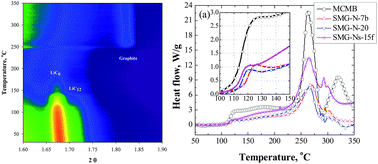Multi-scale study of thermal stability of lithiated graphite†
Abstract
Safety remains a major issue for the

* Corresponding authors
a
Chemical Sciences and Engineering Division, Argonne National Laboratory, 9700 South Cass Avenue, Argonne, IL, USA
E-mail:
Zonghai.chen@anl.gov, amine@anl.gov
Tel: +1-630-252-6551
b X-Ray Science Division, Argonne National Laboratory, 9700 South Cass Avenue, Argonne, IL, USA
c Advanced Power Sources R&D Department, Sandia National Laboratory, Albuquerque, NM, USA
Safety remains a major issue for the

 Please wait while we load your content...
Something went wrong. Try again?
Please wait while we load your content...
Something went wrong. Try again?
Z. Chen, Y. Qin, Y. Ren, W. Lu, C. Orendorff, E. P. Roth and K. Amine, Energy Environ. Sci., 2011, 4, 4023 DOI: 10.1039/C1EE01786A
To request permission to reproduce material from this article, please go to the Copyright Clearance Center request page.
If you are an author contributing to an RSC publication, you do not need to request permission provided correct acknowledgement is given.
If you are the author of this article, you do not need to request permission to reproduce figures and diagrams provided correct acknowledgement is given. If you want to reproduce the whole article in a third-party publication (excluding your thesis/dissertation for which permission is not required) please go to the Copyright Clearance Center request page.
Read more about how to correctly acknowledge RSC content.
 Fetching data from CrossRef.
Fetching data from CrossRef.
This may take some time to load.
Loading related content
